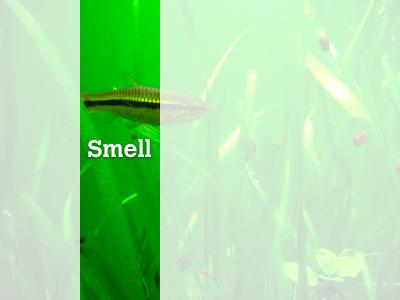
Moving on, smell.
Smell’s a tricky one. If you smell something, it might not be actually present right now. The thing is nearby, is all you can say, in time or space. There’s some confusion over whether something smells strong and is distant, or is really close by but without a strong odour.
Odours linger in the air. They don’t move quickly or in a straight line. We’re embedded in the smell space, we pass through it.
More than this, as Ackerman put it in her book “The Natural History of the Senses”, ‘smell is the mute sense’.
There’s no way of mediating smell—capturing the sensation and representing the salient portions to someone else, like television. We can’t deliberately create precise smells, or even describe smells easily, as we can with drawings for sight. We can’t collaboratively work with smells. It’s a personal experience. The difference between sight and smell I’d liken to the difference between literate and oral cultures—and perhaps we are moving into a smellspace rather than the spectacle now.
People who can do all of this are professionals, specialists. Perfume creators are monks, the only writers in a world of illiterates. There are the only people who can project into this realm that we all feel but can’t refer to. We call them shaman.
Our odour categories, when we have them are arbitrary. We all smell differently, and the categories are culturally relative. There’s a tribe in Senegal that I learned about from Joseph Kaye’s thesis on “Symbolic Olfactory Display.” They have 5 categories. I’ll give you the category and one or two examples from each: